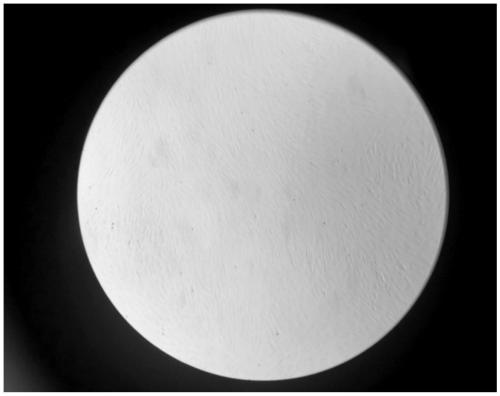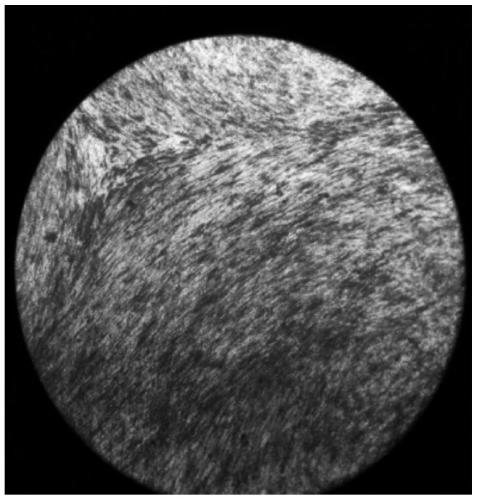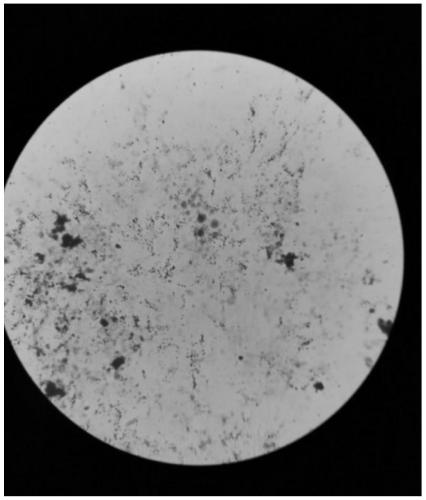Separation and culture method of umbilical cord blood derived mesenchymal stem cells
A technology for the isolation and cultivation of stem cells, applied in the biological field, can solve problems such as unstable sources, fluctuations in serum batch differences, and unclear components, and achieve the effects of low cost, easy operation, and simple process
- Summary
- Abstract
- Description
- Claims
- Application Information
AI Technical Summary
Problems solved by technology
Method used
Image
Examples
Embodiment 1
[0033] This embodiment provides a method for isolating and culturing umbilical cord blood mesenchymal stem cells, which includes the following steps:
[0034] (1) Collect human umbilical cord blood, and place the umbilical cord blood in a 50mL centrifuge tube within 2 hours. After balancing, perform centrifugation at 2000rpm for 10 minutes, take the upper layer, collect plasma, and the lower layer is cells.
[0035] (2) Add the plasma collected from the upper layer to a new centrifuge tube, place it in a water bath at 56°C for 30 minutes, and then centrifuge it at a speed of 4000 rpm for 5 minutes to collect the upper layer to obtain autologous serum. Store in a refrigerator at 4°C for subsequent coating of culture dishes and termination of digestion during passage; standby
[0036] (3) Add physiological saline to the lower layer of cells obtained by centrifugation in the above step 1 to the original volume, and after mixing evenly, take 25 mL and slowly add it to a centrifuge...
Embodiment 2
[0041] This embodiment provides a method for isolating and culturing umbilical cord blood mesenchymal stem cells, which includes the following steps:
[0042] (1) Collect human umbilical cord blood, and place the umbilical cord blood in a 50mL centrifuge tube within 2 hours. After balancing, perform centrifugation at 2000rpm for 10 minutes, take the upper layer to obtain plasma, and the lower layer to obtain cells.
[0043] (2) Add the plasma collected above to a new centrifuge tube, place it in a water bath at 56°C for 30 minutes, and then centrifuge it at 4000 rpm for 5 minutes. Collect the upper layer to obtain autologous serum and store it. Store in a refrigerator at 4°C for subsequent coating of culture dishes and termination of digestion during passage.
[0044] (3) Add physiological saline to the lower layer of cells obtained by centrifugation in the above step 1 to the original volume, and after mixing evenly, take 25 mL and slowly add it to a centrifuge tube containin...
Embodiment 3
[0049] This embodiment provides a method for isolating and culturing umbilical cord blood mesenchymal stem cells, which includes the following steps:
[0050] (1) Collect human umbilical cord blood, and place the umbilical cord blood in a 50mL centrifuge tube within 2 hours. After balancing, perform centrifugation at 2000rpm for 10 minutes, take the upper layer to obtain plasma, and the lower layer to obtain cells.
[0051] (2) Add the plasma collected above to a new centrifuge tube, place it in a water bath at 56°C for 30 minutes, and then centrifuge it at 4000 rpm for 5 minutes. Collect the upper layer to obtain autologous serum and store it. Store in a refrigerator at 4°C for subsequent coating of culture dishes and termination of digestion during passage.
[0052] (3) Add physiological saline to the lower layer of cells obtained in the above step 1 to the original volume, mix well, take 25mL and slowly add it to a centrifuge tube containing 20mL lymphocyte separation mediu...
PUM
 Login to View More
Login to View More Abstract
Description
Claims
Application Information
 Login to View More
Login to View More - R&D
- Intellectual Property
- Life Sciences
- Materials
- Tech Scout
- Unparalleled Data Quality
- Higher Quality Content
- 60% Fewer Hallucinations
Browse by: Latest US Patents, China's latest patents, Technical Efficacy Thesaurus, Application Domain, Technology Topic, Popular Technical Reports.
© 2025 PatSnap. All rights reserved.Legal|Privacy policy|Modern Slavery Act Transparency Statement|Sitemap|About US| Contact US: help@patsnap.com



